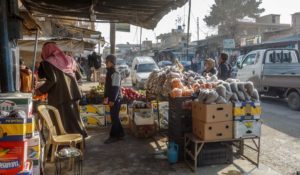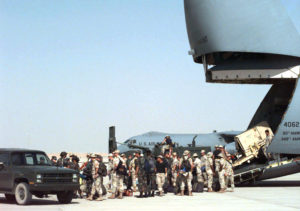
June 23 2010
KABUL – Antonia Maria Costa, head of the United Nations Office on Drugs and Crime (UNODC), last month informed the world that Afghanistan’s expected opium harvest for the 2010 season will be three-quarters of last year’s output – a substantial reduction of 2,600 tonnes. Afghanistan produces over 90% of the world’s illicit supply of opiates, the key ingredient of heroin, and has produced more than 6,000 tonnes of opium a year since 2006.
A ravaging naturally occurring blight exacerbated by climatic conditions is behind this season’s failed harvest, according to UN forensic findings. In the case of Kandahar, Helmand and Urozgan provinces, which collectively produced 80% of the total amount of opium in Afghanistan last year, the blight was further spread by aphids, small plant-eating bugs that can carry fungi and viruses.
The UN estimates that up to 50% of Afghanistan’s opium crops have been affected. Following Costa’s announcement, Taliban insurgents and angry farmers in southern Afghanistan were quick to blame international forces for “aerial spraying” their fields to disrupt this year’s harvest. Farmers claim unconfirmed spraying of their fields has also sickened livestock, children and hurt production of legal crops like fruit and nut trees. The UN, the North Atlantic Treaty Organization and US officials deny the claims.
Taliban insurgents, who have a high influence throughout the south, have already started exploiting the spray theory, with statements to the local population blaming international forces for spraying unknown chemicals over southern Afghanistan. “The people believe that this disease is sprayed by ISAF [International Security Assistance Force] onto the crops,” a source in Helmand province told Asia Times Online. ”Farmers claim to have some evidence, saying ‘when we get up early in the morning after a night’s sleep, we have seen some white powder-like residue in our fields and even in our homes which are near the field’.”
Anecdotal claims of usage of chemicals also have been made in neighboring Uruzgan province. “There are strong rumors among the people that foreign forces sprayed drugs with a virus from the air onto their poppy fields,” Murad, a resident of Tarin Kowt, Uruzgan province, said. “Some of them say that they have found white material that looks like poppy seeds, but there is not clear evidence.”
The Taliban’s insistence on ISAF involvement and claims by farmers have been galvanized by a previous UNODC program funded by the United States that sought to “weaponize” fusarium oxysporum, a plant fungus capable of devouring coca bushes, poppy fields and marijuana plants.
Uzbekistan served as the test-bed for the project although at least two Central Asian states refused to participate, opting to manually eradicate their poppy fields, and the project was ultimately terminated in 2002 without the fungus ever being used. Efforts to deploy the virus to South America were blocked by Colombia and Peru and even the United States prohibited aerial dispersal of the fungal agent against marijuana fields in the state of Florida following warnings from scientists that the fungus could mutate into a hardier-strain capable of attacking non-targeted crops and livestock.
The Taliban-perpetuated propaganda machine, however, is having an impact among conspiracy minded communities in southern Afghanistan who are adamant that international forces are responsible for the destruction of their crops.
A much less nefarious culprit may bear ultimate responsibility for the wide-scale destruction of the opium poppies: Mother Nature. Although the UNODC is currently testing samples from the badly damaged opium crop, physical evidence points to a fungus, possibly macrosporium papaverus, a blight that causes root and capsule rot, resulting in little to no opium latex for extraction by farmers.
Enyathullah, a landlord from Arghandab district of Kandahar province, shed light on the decrease in opium production in Kandahar. “Farmers used to receive 140 kilograms of opium while they now yield 14 kg from the same land,” he said. Countering Taliban claims of a conspiracy, Enyathullah supports the physical evidence that the poppy blight is natural occurring. “Last year, pomegranates were affected by a virus; whereas this year, poppy plants suffer from such problem. A limited number of farmers cultivated opium in Arghandab last year since it was very costly to pay high bribes to the police, bear very low prices of opium, and deal with increasing raids by local security forces,” said Enyathullah.
The poppy plant blight has already hurt general markets and businesses in Kandahar city because the income of farmers from the poppy fields has been slashed, he said. The several highly destructive funguses, viral diseases and forms of blight that affect poppy plants can be exacerbated by excessive moisture, high humidity and overly watered poppy crops. For example, pleospora calvescens, a type of leaf blight harmful to poppy varieties, is worse in times of heavy rainfall or high humidity.
“Beginning in early March, the temperature range between day and night was substantially high so it caused dew in the field. Although dew is good for poppy plants during maturation, this year the increase in dew and high temperature during the day coupled with low temperatures during the night at the growing and blooming stage caused an aphid infestation,” a source from Helmand familiar with poppy cultivation explained to Asia Times Online. “This aphid infestation causes different problems for different crops, and this year it came late in the season so it helped destroy large plots of poppy crops in southern Afghanistan.”
Costa of the UNODC told participants at an anti-drug forum held in Moscow on June 9 that Afghanistan was entering its third year of substantial decrease in opium output. “This downward trend will continue in 2010 but for a different reason: a natural occurring blight, or plant disease. The same amount of hectares was cultivated as last year but with a drastically different opium output. The blight is caused by a known fungus that has been recorded in Afghanistan over the past 35 years.”
International forces in Afghanistan have adopted a less aggressive opium poppy eradication campaign in favor of increased focus on interdiction and disrupting drug-processing workshops. Widespread destruction will create a new cycle of indebtedness for farmers, raising tensions between rural communities and the Afghan government, and has drastically driven up prices for opium. Opium prices have surged to nearly $115-125 per kilogram from a stable US$25-$35 in some areas.
“The price of opium has gone up because every farmer thinks that this year the opium production was low, so they keep their opium and do not sell it because they hope that the prices will go up,” Ahmad Jawed, a resident from Helmand province, told Asia Times Online.
“I heard that the opium price is around 65,000 [US$720] to 75,000 Pakistani rupees per seven kilograms, right now. But it was around 10,000-25,000 Pakistani rupees. The quality of the opium is important regarding the price,” Murad told Asia Times Online.
The UNODC estimates that upwards of 12,000 tonnes of opium are currently in storage and held by a collection of farmers, drug traffickers and insurgents. The soaring prices of raw opium will lead to windfall profits for those wealthy enough to hold onto their caches and sell at times they can make most profit.
The underwhelming 2010 opium harvest will likely lead to farmers planting more in hopes of a bumper crop next year, boosting the profits that anti-government groups like the Taliban and Hezb-i-Islami make from taxing the cultivation and trafficking of narcotics. Rising profits will also threaten the success of the UNODC-sponsored poppy-free province initiative that gives incentives to provinces that wipe out their illicit opium production. Currently 17 of the country’s 34 provinces are poppy-free, a decrease of three from last year, according to UNODC statistics.
Despite the Barack Obama administration’s overhaul of the Afghan war effort beginning last year, little if any meaningful commitment has been made toward curbing the industrial-scale production of narcotics in Afghanistan.
Earlier this year, the UNODC released a long-awaited Afghan cannabis survey that confirmed suspicions that Afghanistan is now the world’s number one producer of two illicit narcotics: opiates and cannabis resin, known better as hashish. Gross misunderstanding of the narcotics problem plaguing Afghanistan has festered for almost nine years under the international community’s watch. The problem has soared to epidemic proportions, causing a tidal wave of legal, health, economic and security problems from Southwest Asia to Europe.
Although corruption has been identified by the ISAF and the US as a bigger challenge than the insurgency in Afghanistan, little has been done to recognize the source of this corruption: the entrenched narco-economy and its penetration of the Afghan state.
Russian government officials have been quick to criticize the ISAF and the US for failure to tackle the burgeoning drug trade as each year an estimated 30,000 Russian youths perish from overdosing on heroin that originated in Afghanistan.
“How are we supposed to take on the drug trade when Afghan government officials cannot explain where the bulk of international financial assistance is and how it was spent?” asked Rudik Iskujin, head of the Group on Cooperation between the Federation Council of the Russian Federation and the National Assembly of Afghanistan. “Nearly 50% of the international financial aid [given to Afghanistan] is processed by Afghan government entities. The sad fact is only 2% of international monetary assistance is visible by Afghan government entities.”
As thousands of international and Afghan security forces prepare to pacify large swathes of Taliban-occupied and Taliban-influenced territory throughout southern Afghanistan this summer, Afghan farmers will be preparing for a possible record-breaking opium poppy planting season beginning in mid-September, 2010.
The invariably harmful effects of the drug industry on governance, stability and its perversion of the local economy will continue to haunt the international community’s efforts in Afghanistan and thwart progress toward a stable and self-sustaining state until the problem is finally recognized as a key source of the current political and economic instability.






